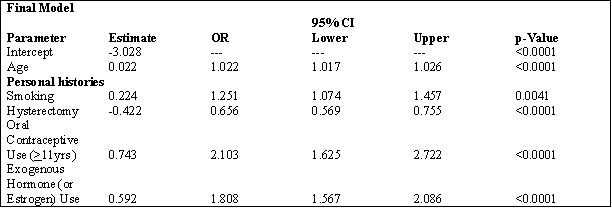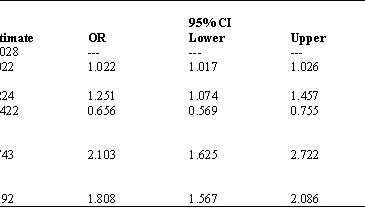There are numerous factors that can lead to breast cancer. These influences include age, family history, exposure to hormones and lifestyle habits such as smoking and drinking alcohol. In this week’s ASHES, we review a study by Croghan et al. (2009). The study compared the prevalence of non-milk duct or lobule related breast cancer among women who reported smoking more than 100 cigarettes during their lifetime and women who smoked less than 100 cigarettes or never smoked.
Methods
- Croghan et al. collected data from 8,927 female patients seen at the Mayo Clinic Breast Clinic between August 1, 1993 and November 31, 2003
- The final sample of 8,097 women included:
- 831 current smokers;
- 714 former smokers; and
- 6,552 women who never smoked.
- Researchers excluded women who:
- were diagnosed with non-breast-related cancers;
- were diagnosed with breast cancers originating in the milk-producing ducts or lobules of the breast; or
- could not be linked with the Mayo Clinic Diagnostic Index.
- Patients completed a self-administered questionnaire. If patients made return visits to the clinic, researchers included only their first completed survey in the analyses.
- To test the effect tobacco smoke has on the probability of a breast cancer diagnosis, researchers compared patients with no cancer to patients with breast cancer using Pearson chi-squared tests and multivariate logistic regression with stepwise elimination. In each case, researchers used a two-sided test with a 0.05 significance level.

Figure. Predictive Model of Breast Cancer using Logistic Regression (Adapted from Croghan et al, 2009). Click image to enlarge.
Results
- Croghan et al., using logistic regression found, after controlling for other factors, that having a personal history of ever smoking more than 100 cigarettes increased the odds of a breast cancer diagnosis by 25% (CI = 1.07, 1.46).
Limitations
- Self-report of previous smoking behavior provides a limited amount of data.
- Self-report might be affected by recall bias.
- The use of a multivariate model includes shared variance; researchers did not specifically analyze the unique variance* due to cigarette smoking.
Conclusion
The researchers admit that it is difficult to assess the effects of lifestyle habits such as smoking and drinking. More research is needed to clarify the influence of lifestyle on the development of breast cancer. Nevertheless, Croghan et al. observed that smoking at least 100 cigarettes at any point during life increases a woman’s risk for developing breast cancer. This study supports a cautionary note: it is possible that modest levels of substance use can lead to adverse health issues.
-Ingrid Maurice
References
Croghan, I. T., Pruthi, S., Hays, J. T., Cha, S., Johnson, R. E., Kosel, M., et al. (2009). The role of smoking in breast cancer development: an analysis of a Mayo Clinic cohort. The Breast Journal, 15(5), 489-495.
*Note: Researchers did not test the effect of cigarette smoking on the development of breast cancer independently from other variables listed
in Table 1.
What do you think? Please use the comment link below to provide feedback on this article.




